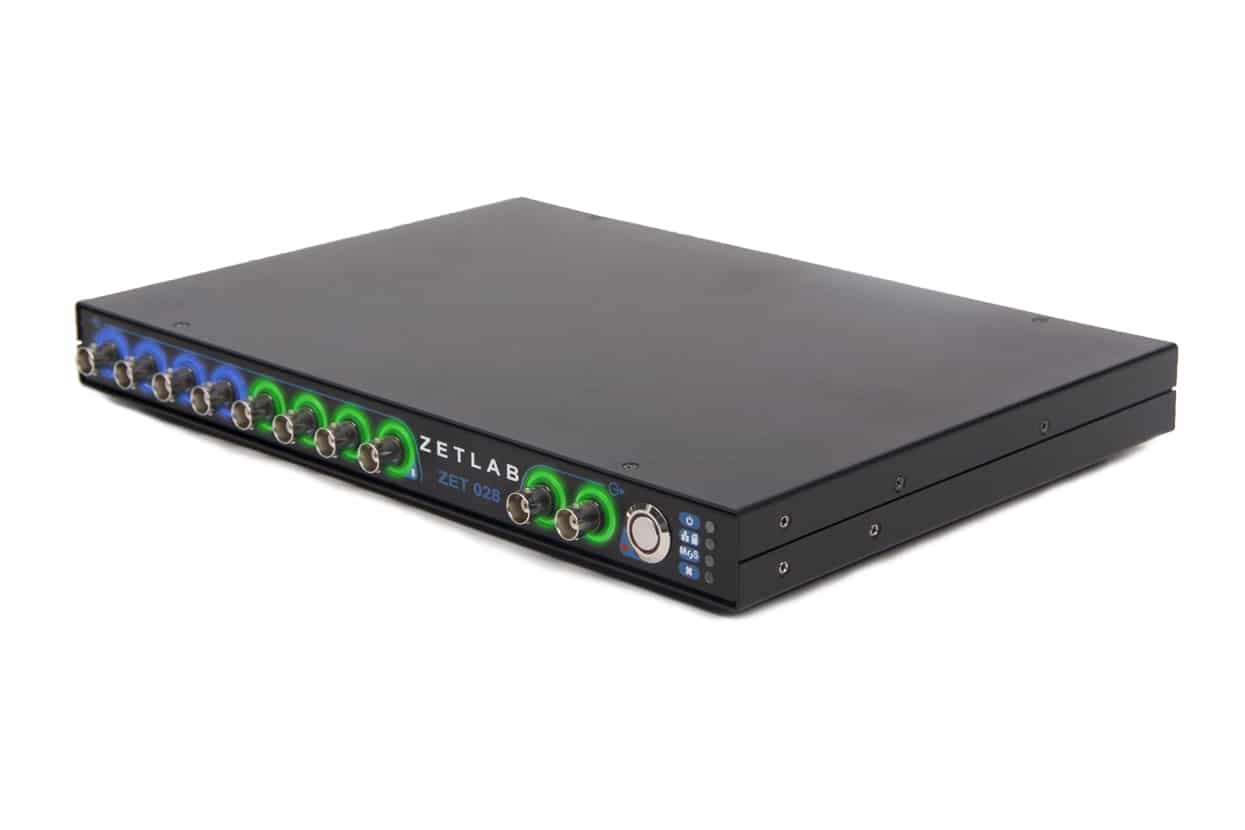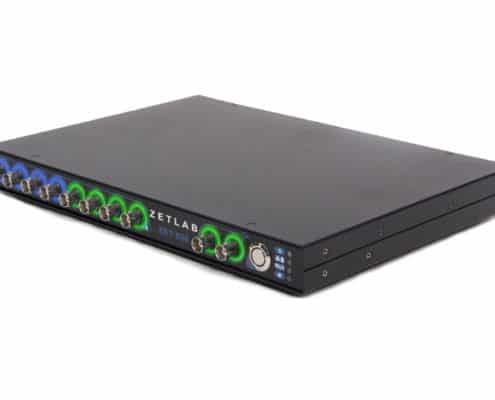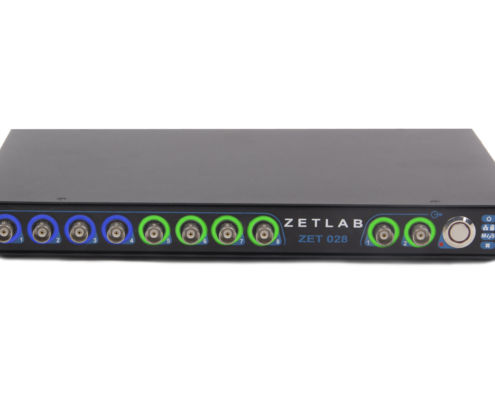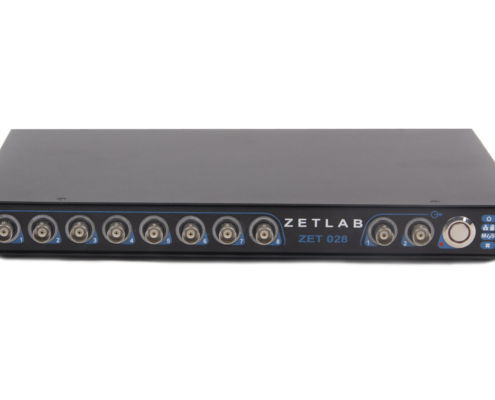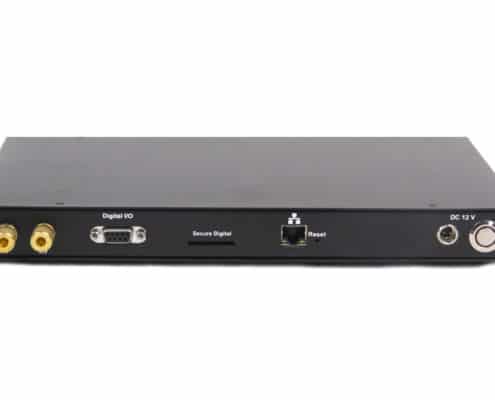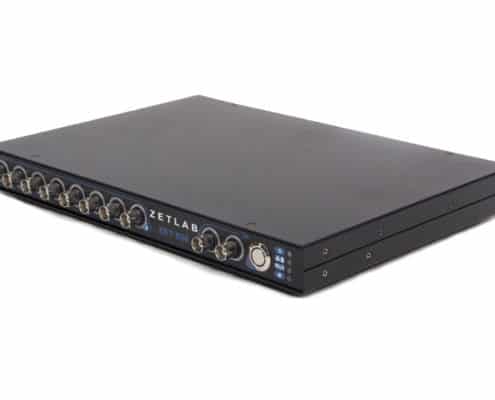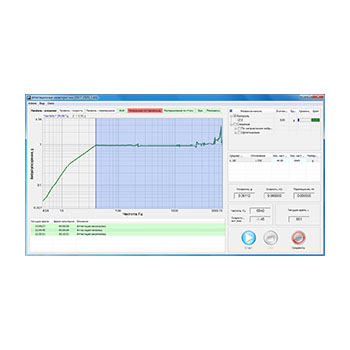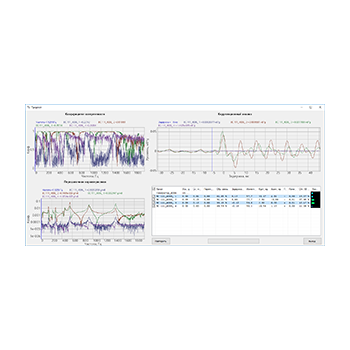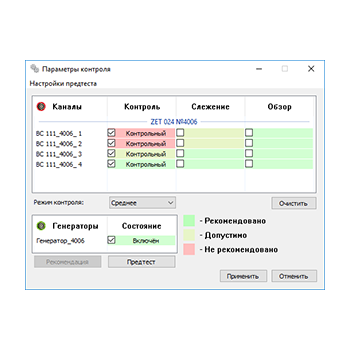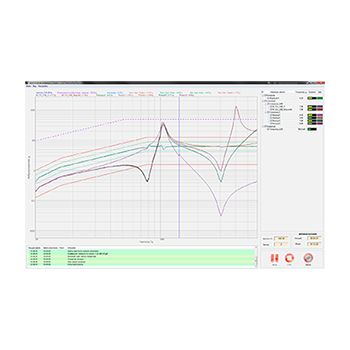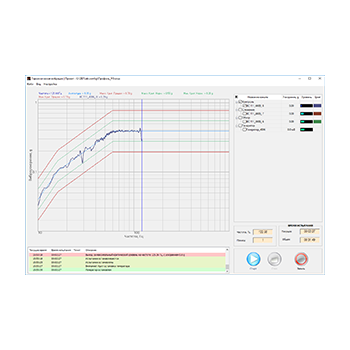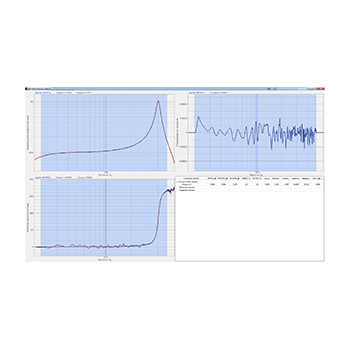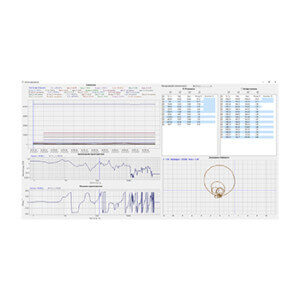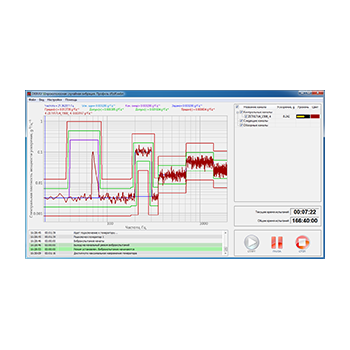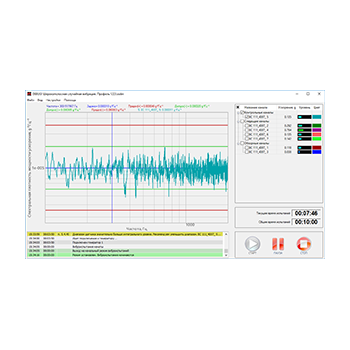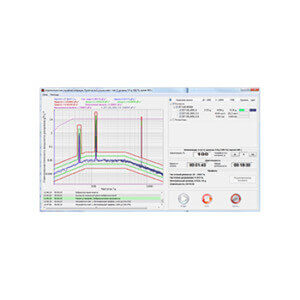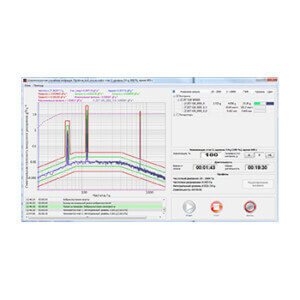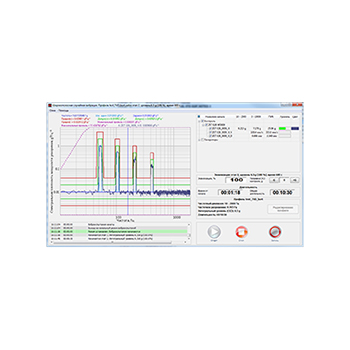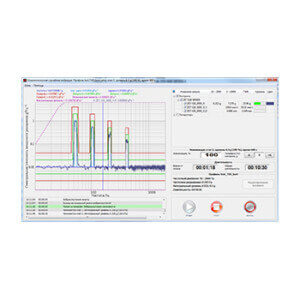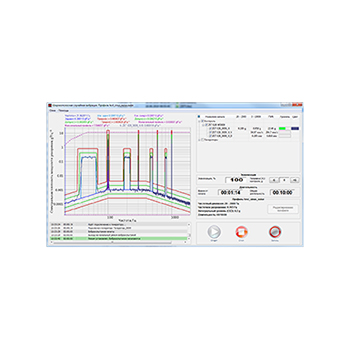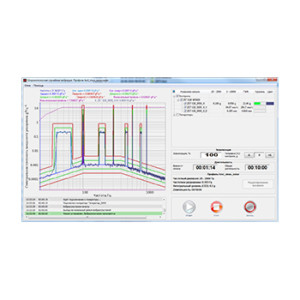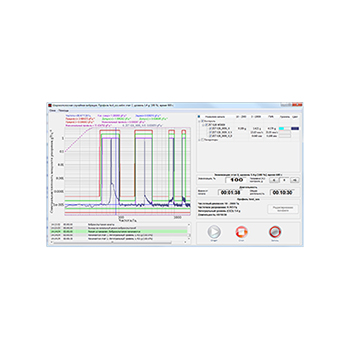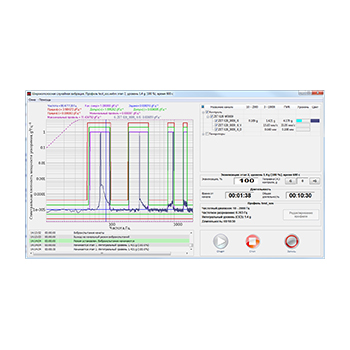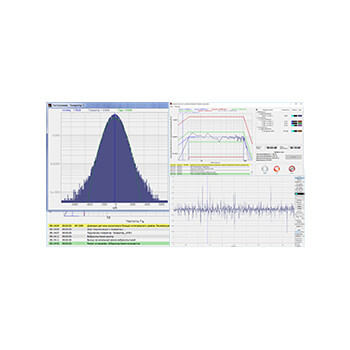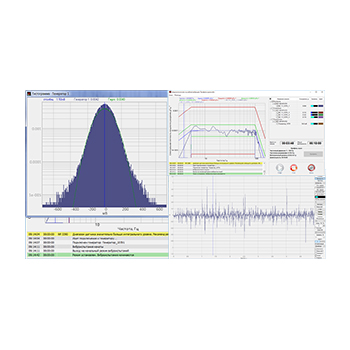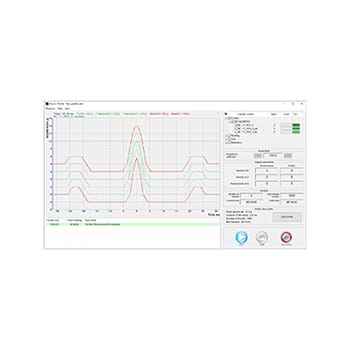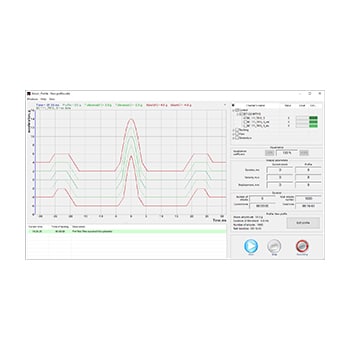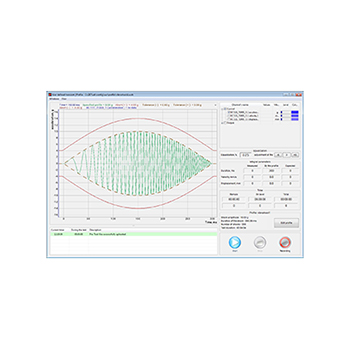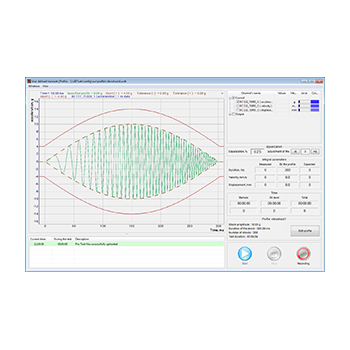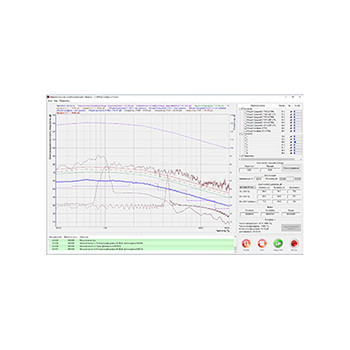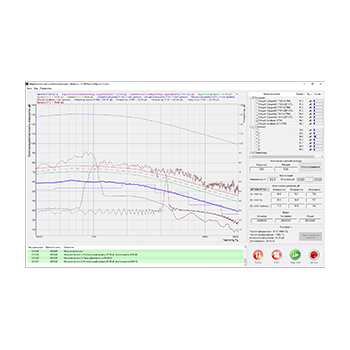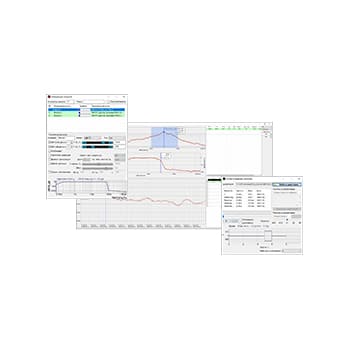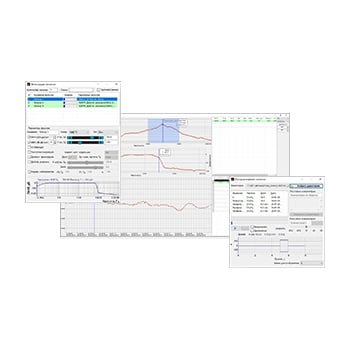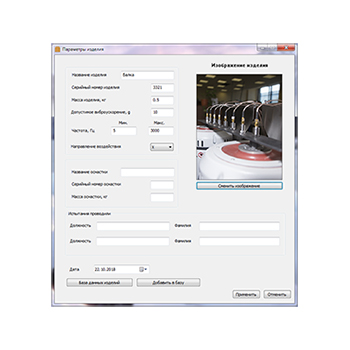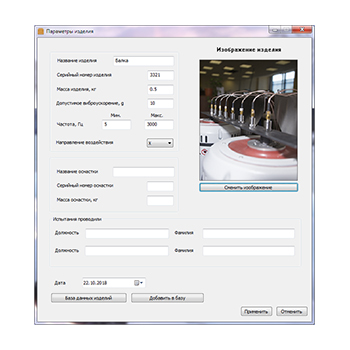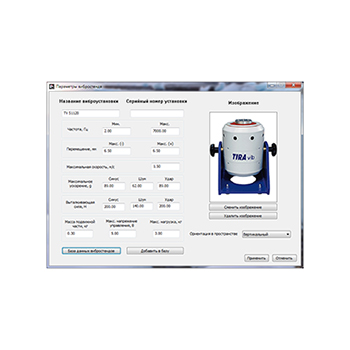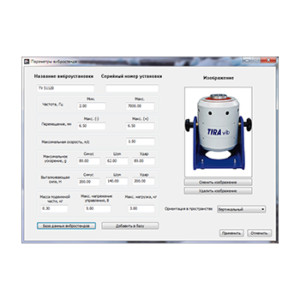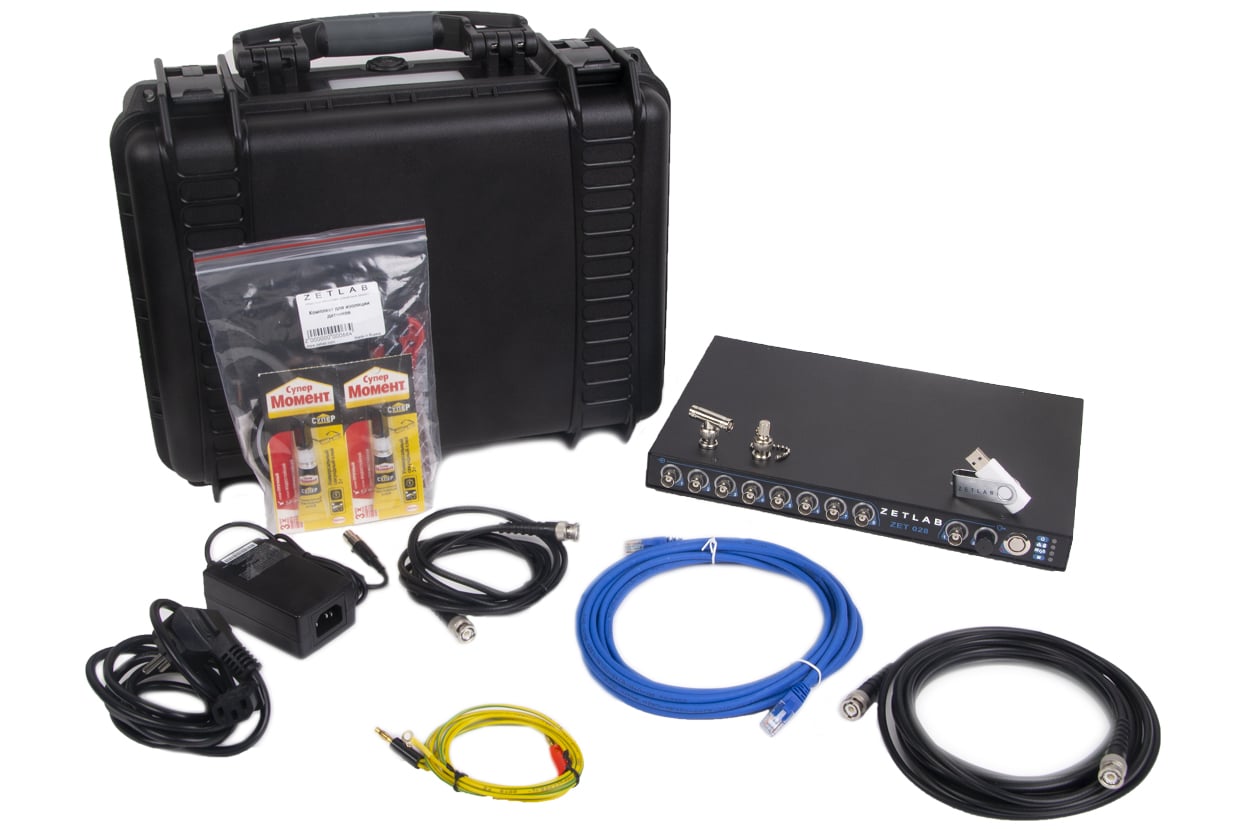VIBRATION CONTROLLER (VCS) ZET 028
The vibration controller ZET 028 is designed to control electrodynamic shakers during various tests in the following modes:
- constant-frequency sinusoidal vibration or frequency sweep (Sine),
- resonance search, track and dwell (RSTD),
- controlled spectrum random broadband vibration (RBV) (Random),
- sinusoidal vibration imposition on RBV (Sine-on-Random)
- narrow-band random vibration imposition on RBV (Random-on-Random),
- sinusoidal vibration imposition on sinusoidal vibration (Sine-on-Sine),
- sinusoidal vibration and RBV imposition on RBV (Sine-and-Random-on-Random),
- conventional shock (Shock),
- vibration shock,
- gunfire impact imitation,
- given shock response spectrum cumulative impulse (SRS),
- user-defined impulse (TTH),
- field (recorded) data reproduction mode (FDR),
- fatigue damage spectrum (FDS),
- excess kurtosis (Kurtosion),
- signal post-processing.
Main control modes of acoustic noise effect tests (vibration, acoustic component):
- acoustic noise with even acceleration/noise pressure spectrum density across the entire controlled frequency range,
- alternating frequency tone within a given frequency range,
- volume resonance method.
Can be used in shakers and impact units for the primary and periodic certification.
Compatible with all types of electrodynamic shakers from various manufacturers as well as with servohydraulic shakers.
Simultaneous operation of multiple vibration generators: up to 4 in a single unit.
Support for various sensor types: various type vibration parameter sensors; laser vibration meters and displacement sensors; sensors with 4…20 mA standard output current; deformation sensors (piezo-resistive sensors), strain gauges, sound pressure gages including those with the TEDS interface.
With smart software, you can test the entire system and generate recommendations on passing the selected profile.
POR (price on request)
Specifications
of Vibration controller (VCS) ZET 028
| Technical specifications | |
|---|---|
| Frequency range | 0,01 Hz… 35 kHz |
| Dynamic range | 130 dB |
| Number of measurement channels (feedback channels) | 8 |
| Number of control channels | from 1 up to 4* |
| Non-linear distortions ratio measurement range in the frequency limit of the first harmonic from 20 Hz up to 12 500 Hz with calculation of higher harmonics up to 25 kHz (max. 8 harmonics at the sampling frequency of 50 Hz). | from 0,01 up to 90 % |
| Limit of absolute error of non-linear distortions ratio Kn | ±(0,1Kn+0,03) |
| PC connection interface | Ethernet |
| Sinusoidal vibration (Sine) | |
| Control signal dynamic range | 105 dB |
| Frequency range of simultaneously analyzed signals | from 3 up to 10000 Hz |
| Measurement cycle duration | 100 ms |
| Frequency measurement error | max. 0,1% |
| Acceleration measurement error | max. 0,5 dB |
| Frequency sweep speed (lin.) | up to 600 Hz/min |
| Frequency sweep speed (log.) | up to 10 oct./min |
| Maintenance precision at resonance Q-factor (anti-resonance) less than 100 | ±3 dB |
| Maintenance precision at the Q-factor less than 250 | ±6 dB |
| Signal change speed | max. 30 dB/s |
| Control methods | By a single channel Average by several channels Max. by several channels |
| Measurement methods | Amplitude RMS Selective |
| LPF | Yes |
| Broadband random vibration (Random) | |
| Dynamic range of the control signal | 80 dB |
| Frequency range of simultaneously analyzed signal | 3 – 20000 Hz |
| Measurement cycle duration | 1 s |
| Frequency resolution | 6 – 0,3 Hz |
| Maintenance accuracy | ±3 dB |
| Control methods | By a single channel Average by several channels Max. by several channels |
| Classical shock (Shock) | |
| Shock duration | 0,1 – 30 ms |
| Shock frequency | 1 – 120 shocks per minute |
| Number of shocks | 1 – 100 000 |
| Shock amplitude deviation | max. 5% |
| Shock duration deviation | max. 5% |
| LPF | Yes |
| Shock pulses types | Sine Triangular Rectangular Saw-shaped Trapezoidal |
| Vibrational shock | |
| Shock duration | 10 ms – 4 s |
| Shock frequency | 15 – 1200 shocks per minute |
| Number of shocks | 1 – 100 000 |
| Other functions | |
| Additional operation modes | Resonance search, track and dwell (RSTD) Gunfire impact imitation Synthesized pulse with pre-set parameters of the shock response spectrum (SRS) Transient time history (TTH) Field data replication mode (FDR) Fatigue damage spectrum (FDS) Kurtosis control (Kurtosion) Bandpass filter Acceleration dispersion diagram |
| Combined operation modes | Sine-on-Random Random-on-Random Sine-on-Sine Sine-and-Random-on-Random |
| Operational specifications | |
| Power supply network frequency | 49,5 – 50,5 Hz |
| Power supply voltage | 100 – 240 V |
| Consumed power | max. 8 W |
| Dimensions (l×w×h), max. | 280×200×35 mm |
| Weight, max. | 1 kg |
*Depending on the number of connected and synchronized modules

